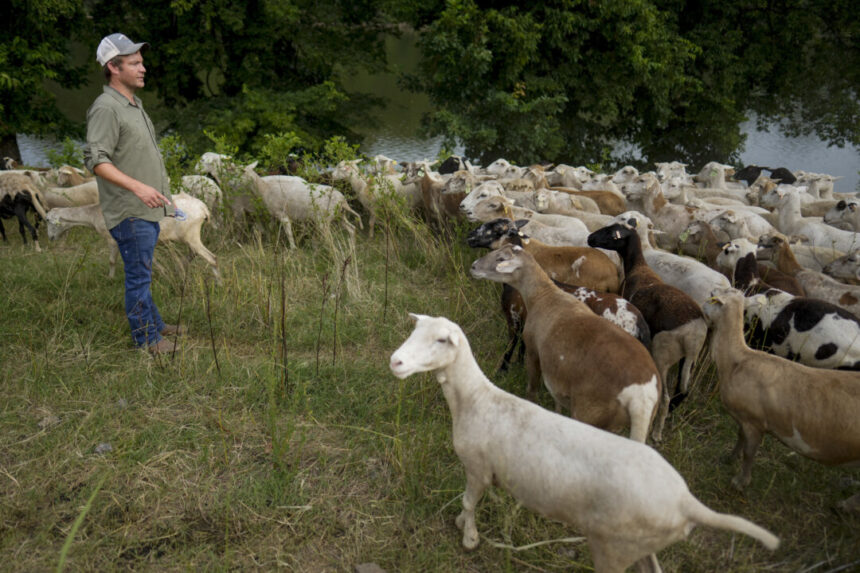In Nashville, Tennessee, tourists cruising along the Cumberland River may be surprised to see a flock of sheep grazing on the riverbank near the city’s skyline. Managed by urban sheepherder Zach Richardson, the Nashville Chew Crew has become a popular attraction for onlookers, who prefer watching the sheep graze over traditional landscaping methods.
Sheep are increasingly being used in urban areas for prescribed grazing to address various land management issues such as invasive species, wildfire risks, and habitat preservation. In Nashville, the Chew Crew was hired by the parks department to maintain historic sites like Fort Negley and the Nashville City Cemetery, covering about 150 acres of city property annually.
Accompanying the sheep are livestock guardian dogs, Anatolian shepherds, who protect the flock from intruders. Duggie, the border collie, assists Richardson in managing the flock, showcasing the efficiency of using animals for land maintenance.
Other cities like Santa Barbara, California, have also embraced grazing sheep as a method to manage land buffers and prevent wildfires. The community engagement aspect of using sheep for land management has been well-received, offering a novel approach to preserving natural areas.
Universities like the University of Georgia have also employed herds of goats and sheep to combat invasive plant species on campus grounds, showcasing the versatility and eco-friendly nature of using animals for vegetation control.
While sheep grazing has its benefits, it’s important to consider the specific needs of each urban site before implementing such practices. Challenges such as predator attacks and environmental impacts must be carefully managed to ensure the success of using sheep for land maintenance.
The city of Santa Barbara conducts environmental surveys prior to introducing grazers, as it can impact bird habitats and nests.
“Introducing around 500 sheep into an area has a much greater impact on the land and soil than our native herbivores,” stated O’Conner.
On the levee of the Cumberland River, the side of the greenway where mowers are used appears well-manicured like a golf course. Conversely, on the other side where the Chew Crew ewes are grazing, an ecosystem is thriving.
“There’s a variety of wildlife such as rabbits, butterflies, groundhogs, turtles, and nesting birds,” Richardson explained. “Despite some vegetation being removed, there is still a habitat that can support wildlife.”
Richardson monitors his flock daily and often receives photos and videos taken by people who come across the sheep due to his phone number being listed on the electric fence.
“If the sheep can serve as a means to reconnect with nature even for a brief moment or ignite a child’s imagination to explore the river and catch a crawdad, I believe it is beneficial,” Richardson expressed.
By Kristin M. Hall






